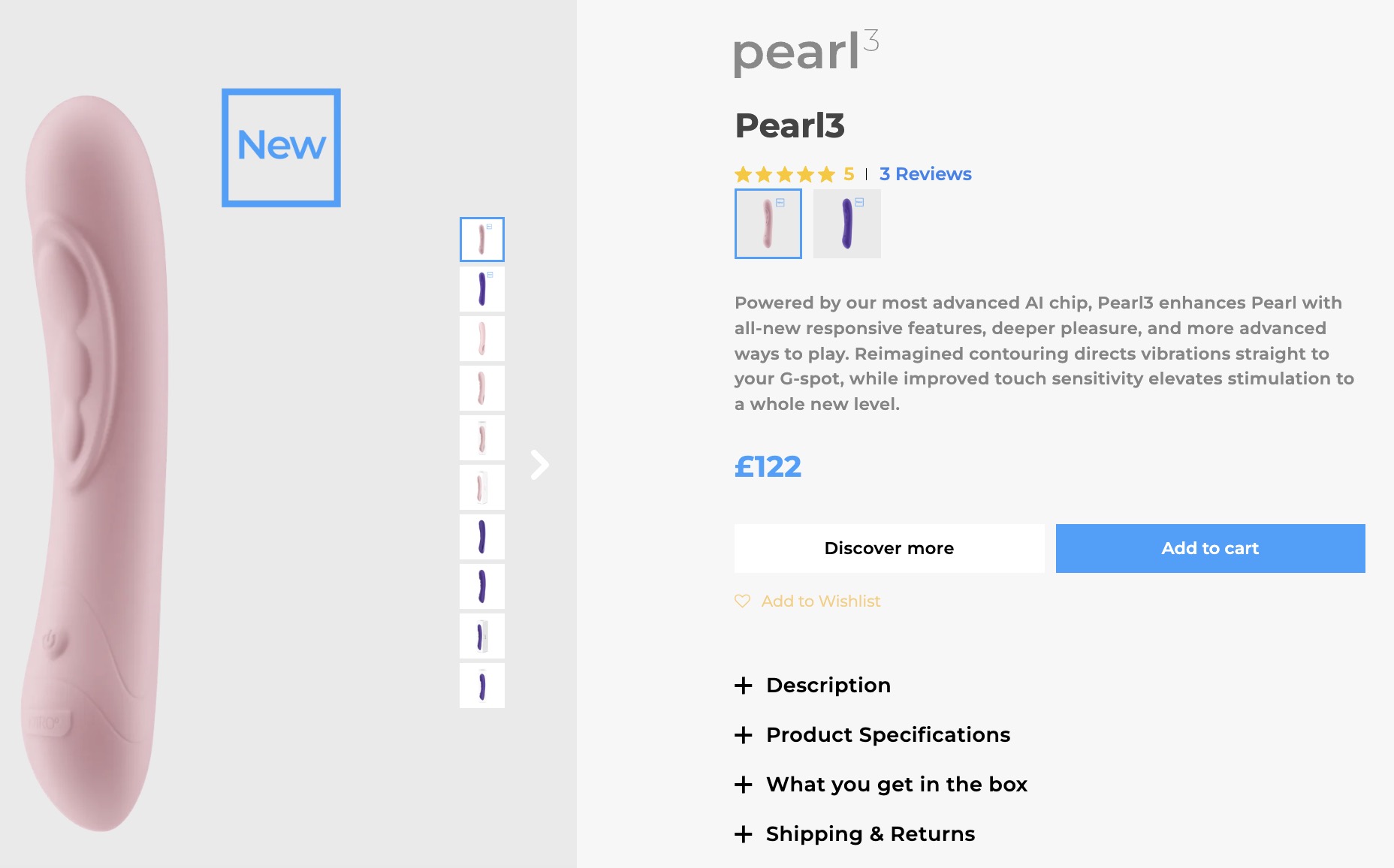Introduction to the Importance of Dildo Material
The material of a dildo is essential for a successful sexual experience. Silicone and glass are common choices. They can hold heat, making for an exciting temperature play. Jelly and PVC are often used, but they have dangerous chemicals. To ensure safety and pleasure, buy body-safe materials. “SheVibe” is a great source for quality toys.
Remember, the journey is just as important as the destination!
Factors to Consider When Choosing Dildo Material
Picking the right material for a dildo is important. We’ve gathered some info to help you decide. See the table below for different materials, their advantages and disadvantages.
| Material | Advantages | Disadvantages |
| Silicone | Durable, non-porous, easy to clean | Can be pricey |
| Jelly/Rubber/Latex | Flexible, affordable, realistic texture | Porous, can have phthalates, hard to clean |
| Glass/Acrylic/Metal | Smooth, non-porous, temperature play | Can be heavy and uncomfortable |
Porous materials hold bacteria, so silicone is best. It’s a good idea to think about what you like too. Rigid materials like glass or metal? Soft materials like silicone or rubber?
Dr. Zhana Vrangalova found that women who use dildos report more satisfaction. So if you’re choosing, remember: silicone is forever, but glass is class.
Best Materials for Dildos
Paragraph 1: Dildos are available in different materials, each with their own benefits and drawbacks. Choosing the best material for your needs depends on various factors such as texture, safety, and ease of maintenance.
Paragraph 2:
The following table shows different dildo materials along with their pros and cons:
| Material | Description | Pros | Cons |
|---|---|---|---|
| Silicone | Soft, flexible, and hypoallergenic material | Non-porous, easy to clean, and come in different textures and colors | Can be expensive and incompatible with some lubricants |
| Glass | Smooth, hard, and hypoallergenic material | Suitable for temperature play, easy to clean, and long-lasting | Can be fragile and break if mishandled |
| Metal | Durable, weighty, and hypoallergenic material | Suitable for temperature play and long-lasting | Can be cold to the touch, noisy during use, and incompatible with some lubricants |
| PVC | Soft, flexible, and affordable material | Come in different colors and textures | Porous, difficult to clean, and can contain harmful chemicals |
| TPE | Soft and flexible material | Affordable, come in different textures, and compatible with most lubricants | Porous, difficult to clean, and can contain harmful chemicals |
Paragraph 3: It’s essential to ensure that the material you choose is safe for your body and does not contain harmful chemicals. Always take the time to read the product description and reviews before purchasing a dildo. Additionally, consider the texture and rigidity of the material as it can affect the overall experience.
Paragraph 4: I once purchased a cheap PVC dildo, overlooking the fact that it contained phthalates, which can be harmful to my body. After experiencing discomfort and irritation, I realized the importance of investing in a quality, body-safe material for my pleasure needs.
Silicone: the perfect material for when you want your dildo to feel like your ex – fake, but still satisfying.
Silicone
Silicone has a unique feature, which is its ability to transmit vibrations well. This brings great pleasure during use. It also works with different lubes like water-based or oil-based, making it a very versatile sex toy.
One user shared how he adores his silicone dildo, for its perfect balance of firmness and softness. He says it never fails to give him pleasure, and recommends it to those looking for a great sexual experience.
A glass dildo is the perfect choice for those who don’t believe in the saying ‘people in glass houses shouldn’t throw stones’.
Glass
Glass dildos have a special quality – they can be heated or cooled! This adds something extra to your playtime. To do this, just put them in hot or cold water. Plus, these dildos don’t contain any hazardous chemicals, so they’re easy to keep clean.
Be gentle when using glass dildos, since they’re fragile. Store them in a protected bag or case to avoid any damage. You can also try experimenting with different temperatures and textures by adding a silicone sleeve, or trying out different shapes for unique sensations.
Glass dildos are great if you’re looking for something more exciting in the bedroom. With their sleek design and versatility, they’re worth adding to your collection. So go on – give them a try and see why so many people love them!
Stainless Steel
Stainless steel is a popular choice for dildos due to its durability, non-porosity, and sleek look. Let’s take a deeper dive into why it’s such a great material for beginners and experienced users alike!
Pros:
- Durability: Stainless steel is tough and long-lasting, and can handle wear and tear.
- Non-porous: It won’t absorb bacteria or any bad stuff. Plus, it’s super easy to clean and sanitize.
- Versatility: You can use it for temperature play – warm it up in hot water or cool it down in the fridge for different sensations.
Cons:
- It may be too hard/heavy for some users.
- It can retain heat/coldness, which can be uncomfortable.
- If not taken care of properly, it can get scratched or tarnished.
Plus, stainless steel tends to be pricier than other materials used in sex toy manufacturing. But it’s worth it, since it’ll last longer.
Pro Tip: If it’s your first time using stainless steel, start small with a thinner model. That way, you can get used to the material before going bigger.
Ceramic
Pros:
- Eco-friendly and non-porous surface.
- Smooth, comfortable texture when properly glazed.
- Hypoallergenic for those with sensitive skin or allergies.
- Can be heated or cooled according to personal preference.
Cons:
- Fragile and requires careful handling.
- Cold to the touch, may not appeal to everyone.
- Slightly heavier than other materials like silicone or plastic.
Fun Fact: Ceramics have been used for thousands of years! The oldest known ceramics date back to 24,000 BC found in the Dolni Vestonice archaeological site in Czech Republic.
So why settle for a regular morning wood when you can have a wooden dildo for a truly natural experience?
Wood
Wood is a natural choice for dildos, used by many manufacturers. Eco-friendly, it offers a unique texture to enhance your sexual experience. Some wooden dildos come smooth, while others have intricate designs. Oils can be used to finish them for a silky-smooth glide.
Wooden toys retain temperature better than other materials – heat or chill them to boost sensation. Clean them after use and avoid submerging in water to prevent damage. Get the satisfying, eco-friendly experience wooden dildos offer!
For durably delightful pleasure, try PVC – plastic fantastic for all your erotic needs.
PVC
PVC dildos are a great option for beginners wanting to explore textures. They come in many shapes, sizes and colors. Plus, they’re flexible, non-porous and compatible with both water-based and silicone-based lubricants. However, they may not be as firm as higher-end materials.
Using a condom is recommended for long-term use, and storing the dildo away from direct sunlight or heat sources is also advised.
Overall, PVC dildos are an affordable and versatile way to explore different pleasure products. From glass to silicone, we’ve got the pros and cons of each material covered, so you can stay informed and satisfied!
Pros and cons of different dildo materials
Different Materials for Dildos: Their Pros and Cons
For those considering the various materials used in the manufacture of dildos, it is helpful to know the advantages and disadvantages of each.
A table has been created to aid in the understanding of the pros and cons of different dildo materials:
| Material | Pros | Cons |
|---|---|---|
| Silicone | Body safe, soft, bendable, easy to clean | Can be expensive, may attract dust and debris |
| Glass | Non-porous, can be heated or cooled | Can break if dropped or mishandled |
| PVC | Affordable, soft, easy to find | May contain phthalates, can degrade over time |
| Metal | Firm, non-porous, can be heated or cooled | May be heavy and hard to maneuver |
| Wood | Unique, non-porous, can be beautifully made | Can split or splinter if not properly cared for or stored |
It is important to note that while there are many materials used in the manufacture of dildos, these are the most common. Additionally, it is always important to use toys made from body-safe materials, and to properly clean and care for them.
Furthermore, knowing the differences in materials can help users make informed decisions when choosing the toy that best suits their needs.
A true fact is that according to a study by the Journal of Sexual Medicine, 52% of women have used a vibrator or dildo in their lifetime.
If you’re looking for a durable and easy-to-clean material for your dildo, silicone is the plastic surgery of the sex toy world.
Silicone
When it comes to selecting a silicone dildo, there are a few things to take into consideration. First, the firmness can be different from one product to another. It’s best to select based on what you like. Second, some come with unique features like vibration or realistic textures.
Remember, not all silicone products are equal. It is essential to pick a high-quality one. Lower quality toys can contain hazardous materials such as phthalates.
If you’re looking to buy a dildo, go for silicone! Make sure to research and invest in a top-notch item for safety and pleasure. Don’t miss out on this great option. Just be sure to handle with care. You don’t want a broken heart and a broken dildo!
Glass
Glass dildos have their pros and cons. Pros include a smooth texture that feels great against skin and being hypoallergenic and body-safe. But, they are pricey compared to other materials, fragile, and cold to the touch.
Cleaning is easy, though. Just use soap and water or toy cleaner. To get the most out of your glass dildo, heat it up before use. Run it under warm water or place it in a bowl of warm water for a few minutes.
Lubricant is also great for comfort and to increase pleasure. But, be warned: glass dildos are not for the faint of heart (or vagina)!
Stainless Steel
Stainless steel dildos are a great choice! They’re crafted with high-quality steel, offering durability and hygiene. Perfect for solo play or couples’ indulgence. Pros include being easy to clean and body-safe.
On the other hand, they can be pricey, heavy and not as flexible as rubber or silicone. Plus, they absorb heat or cold quickly, for temperature play. They also come in unique textures for extra pleasure. Did you know that stainless steel dildos were initially developed by the military for medical purposes back in the 1940s? If you lack an appreciation for pottery, maybe ceramic dildos will do the trick!
Ceramic
Ceramic dildos – they can retain temperature! Warming or cooling before use… What a sensation! But, fragility and weight make storage and handling tougher. Invest in a bag or case for extra protection. When cleaning, be gentle and store it right away.
Pros: Hypoallergenic, non-toxic, easy to clean, retains temperature.
Cons: Expensive, heavy, fragile, limited flexibility.
Ceramic dildos are a luxurious choice, but require extra care. Keep these points in mind to make the most of your toy’s unique features. Enjoy!
Wood
Wooden dildos are unique; no two have the same grain patterns! Materials used to make them include oak, cherry, ash, and teak. Technology has allowed for creative designs like ridges and grooves that create interesting patterns when used.
Someone wrote about their experience with a wooden dildo. Comfort was amazing, and the texture felt great. It wasn’t too rough but still provided stimulation.
If you want a durable and versatile dildo, PVC is the way to go! It’s the ‘plastic fantastic’ option.
PVC
Pros: Durable, budget-friendly, easy to clean.
Cons: Flexibility decreases over time, may contain harmful chemicals, sensitive to temperature.
PVC dildos come with their own drawbacks. Phthalates or other harmful chemicals can cause health problems. The Center for Health, Environment and Justice found that some sex toy companies use lead in manufacturing.
Choosing the best dildo material is like selecting wine. It’s all about personal preference and how wild you want to get!
Conclusion on the Best Dildo Material
When selecting a dildo, there are many factors to consider. To make the process easier, we’ve made a table highlighting the pros and cons of the most popular materials.
| Material | Pros | Cons |
|---|---|---|
| Silicone | Safe, comfortable, easy to clean | Pricey |
| Glass | Smooth texture, ideal for temperature play | Fragile, can break easily |
| Metal | Good for temperature play, durable | Heavy, can cause injury if not handled properly |
| Wood | Looks great | Not waterproof, not temperature friendly |
| PVC | Affordable | Porous, hard to clean |
Everyone has different preferences when it comes to sex toys. So, prioritize comfort and safety when choosing. A friend once had a bad experience with a jelly dildo that led to redness. This shows how important material selection is.
Frequently Asked Questions
1. What materials are commonly used for dildos?
Common materials used for dildos include silicone, glass, metal, wood, and PVC.
2. Which material is the safest for use in dildos?
Silicone is generally considered the safest material for use in sex toys like dildos, as it is non-porous, hypoallergenic, and easy to clean.
3. Why is it important to choose a non-porous material for a dildo?
Non-porous materials do not have any tiny pores or holes that can trap bacteria or other harmful substances that can lead to infections or other health risks. This makes them easier to clean and safer to use.
4. What are the benefits of glass and metal dildos?
Glass and metal dildos are known for their firmness and weight, which can provide a unique and satisfying sensation during use. They are also highly durable and easy to clean.
5. Can wooden dildos be used safely?
Wooden dildos can be used safely as long as they are made from non-toxic, untreated wood, and are properly cleaned and maintained. However, they may be more prone to cracking or splintering over time.
6. Are PVC dildos safe for use?
PVC (polyvinyl chloride) is a common material used in sex toys, including dildos. However, PVC can contain phthalates, which are chemicals that can be harmful to your health. It is recommended to choose PVC-free, phthalate-free options for safer use.


